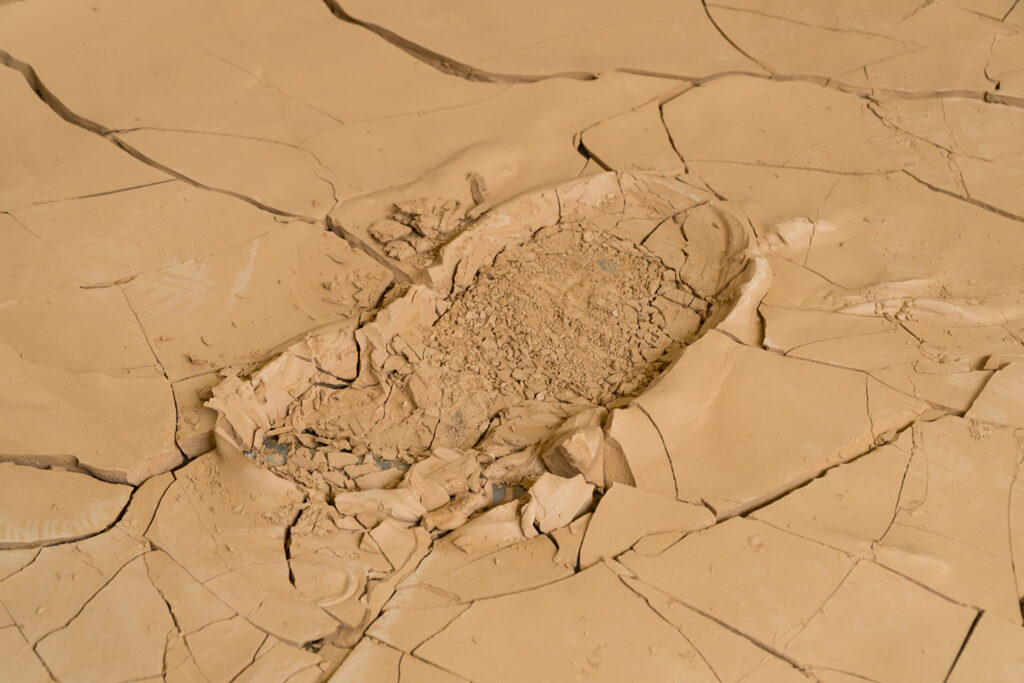Viability test, 2019
240 litres of slip, damage prevention measures (tarped area, duct-taped perimeter, anti-slip mats) signed liability agreement. Installation measures: 302cm x 401cm x 2cm.
In collaboration with Isabelle Sully and Marwan (Tirza Kater and Tim Mathijsen)

A flooding occupies the main space of Marwan, an independent, self-sufficient artist space in order to open a reflection on the in/formal dynamics occurring between artists’ demands and space’s terms of use
It consists of a mixture of water and clay creating a slip – a liquid compound used in craftsmanship, and an artistic technique for casting forms and moulds – that has been manually poured over the space’s floor and that has to remain in place for the duration of the show “Two In A Coffin”.
In maritime insurance, a slip is a memorandum of the particulars of a risk for which a policy is to be executed. The work enacts an administering act and a risk assessment for the exhibition space by testing the premises of the space to hold a potentially damaging element. It is testing the possibilities for artistic demands to be actualised within the requirements of physical safety in the space, but it is also exploring the conditions of trust and support necessaries for those demands to enter, occupy modify, appropriate, claim space for artistic actions: what is allowed, what is permitted, what can be asked when constituting informal safe relations among artists, artist spaces and their runners (who are artists themselves most of the times and as in our case).
On the day of the opening of the show, the premises of the space are conditioned by the installation Viability Test being in a semi-liquid state. A question of making decisions around personal mobility in space is offered to the audience: It remarks how terms of safety need to be negotiated individually in autonomous independent artistic spaces. A path is offered through a series of anti-slip mats that traverse the exhibition and conduct audiences through the works, however presenting a limited accessibility. As the clay slowly turns into a solid state throughout the duration of the show, the changes of consistency in the material allow for a progressive opening of the space to more comfortable positions to be taken by the audience within the space. Accessibility grows and opens as the days of the show accumulate. Addressing the overarching requirement to return the space to how it has been initially found – called ‘deed of surrender’ – the flooding ties the artists to their duties of care once the show ends.